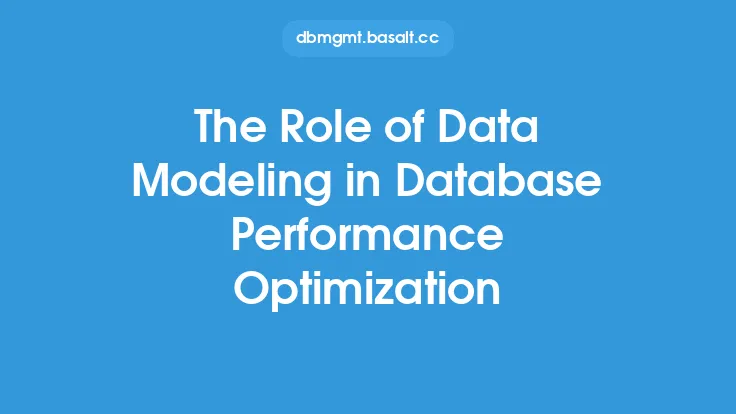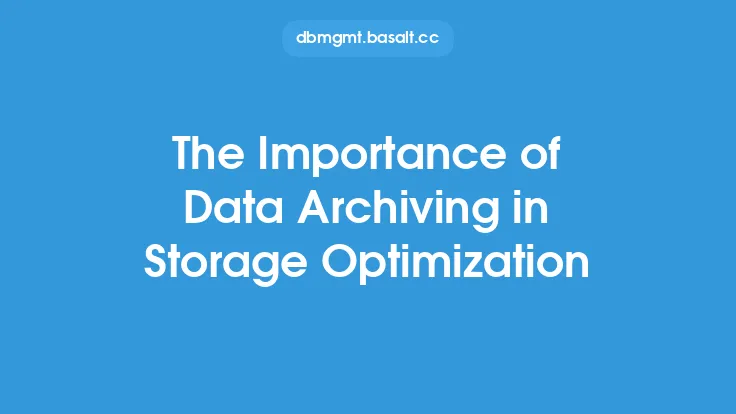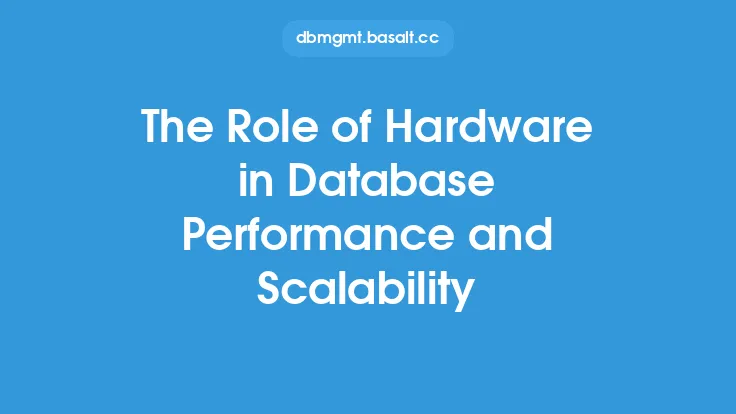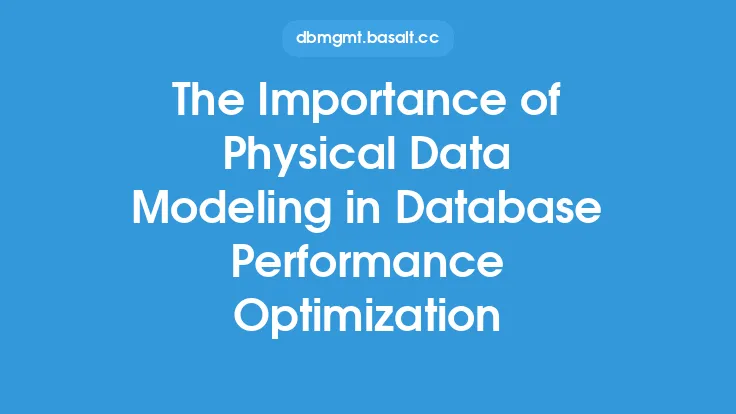Data archiving plays a crucial role in database optimization and performance. As databases grow in size and complexity, they can become bloated with outdated, redundant, or unnecessary data, leading to decreased performance, increased storage costs, and reduced data quality. Data archiving helps to mitigate these issues by removing inactive data from the production database and storing it in a separate archive, where it can be retained for future reference or compliance purposes.
Introduction to Data Archiving
Data archiving is the process of moving data that is no longer actively used or required for daily operations to a separate storage location, known as an archive. This process helps to reduce the size of the production database, improve performance, and decrease storage costs. Data archiving is an essential component of database management, as it enables organizations to manage their data more efficiently, reduce data redundancy, and improve data quality.
Benefits of Data Archiving
Data archiving offers several benefits, including improved database performance, reduced storage costs, and enhanced data quality. By removing inactive data from the production database, data archiving helps to reduce the workload on the database, resulting in faster query execution times and improved overall performance. Additionally, data archiving helps to reduce storage costs by removing unnecessary data from the production database, which can help to decrease the overall cost of storage. Data archiving also helps to improve data quality by removing redundant, outdated, or incorrect data, resulting in a more accurate and reliable database.
Data Archiving Methods
There are several data archiving methods, including online archiving, offline archiving, and nearline archiving. Online archiving involves storing archived data online, where it can be easily accessed and retrieved. Offline archiving involves storing archived data offline, where it is not readily accessible. Nearline archiving involves storing archived data on a separate storage device, such as a tape drive or disk array, where it can be quickly retrieved if needed. The choice of data archiving method depends on the organization's specific needs and requirements, including data retention policies, regulatory requirements, and storage costs.
Database Optimization Techniques
Data archiving is an essential component of database optimization, as it helps to improve database performance, reduce storage costs, and enhance data quality. Other database optimization techniques include indexing, caching, and query optimization. Indexing involves creating indexes on frequently accessed columns to improve query performance. Caching involves storing frequently accessed data in memory to reduce the number of disk I/O operations. Query optimization involves optimizing database queries to improve performance and reduce execution times. Data archiving can be used in conjunction with these techniques to further improve database performance and reduce storage costs.
Performance Considerations
Data archiving can have a significant impact on database performance, as it helps to reduce the size of the production database and improve query execution times. However, data archiving can also introduce additional overhead, such as the time and resources required to archive and retrieve data. To minimize this overhead, organizations can use techniques such as automated archiving, which involves scheduling archiving tasks to run during periods of low activity. Additionally, organizations can use data archiving tools and technologies, such as data archiving software and hardware, to streamline the archiving process and improve performance.
Storage Considerations
Data archiving requires careful consideration of storage requirements, as archived data must be stored on a separate storage device or medium. The choice of storage device or medium depends on the organization's specific needs and requirements, including data retention policies, regulatory requirements, and storage costs. Common storage devices and media used for data archiving include disk arrays, tape drives, and cloud storage. Disk arrays offer high performance and low latency, making them suitable for online archiving. Tape drives offer high capacity and low cost, making them suitable for offline archiving. Cloud storage offers scalability and flexibility, making it suitable for nearline archiving.
Data Retrieval and Restoration
Data archiving involves not only removing inactive data from the production database but also ensuring that archived data can be retrieved and restored if needed. Data retrieval and restoration involve retrieving archived data from the archive and restoring it to the production database. This process can be time-consuming and resource-intensive, depending on the size and complexity of the archived data. To minimize this overhead, organizations can use techniques such as automated retrieval and restoration, which involve scheduling retrieval and restoration tasks to run during periods of low activity. Additionally, organizations can use data archiving tools and technologies, such as data archiving software and hardware, to streamline the retrieval and restoration process and improve performance.
Conclusion
Data archiving plays a critical role in database optimization and performance, as it helps to improve database performance, reduce storage costs, and enhance data quality. By removing inactive data from the production database and storing it in a separate archive, data archiving helps to reduce the workload on the database, resulting in faster query execution times and improved overall performance. As databases continue to grow in size and complexity, data archiving will become an increasingly important component of database management, enabling organizations to manage their data more efficiently, reduce data redundancy, and improve data quality.





